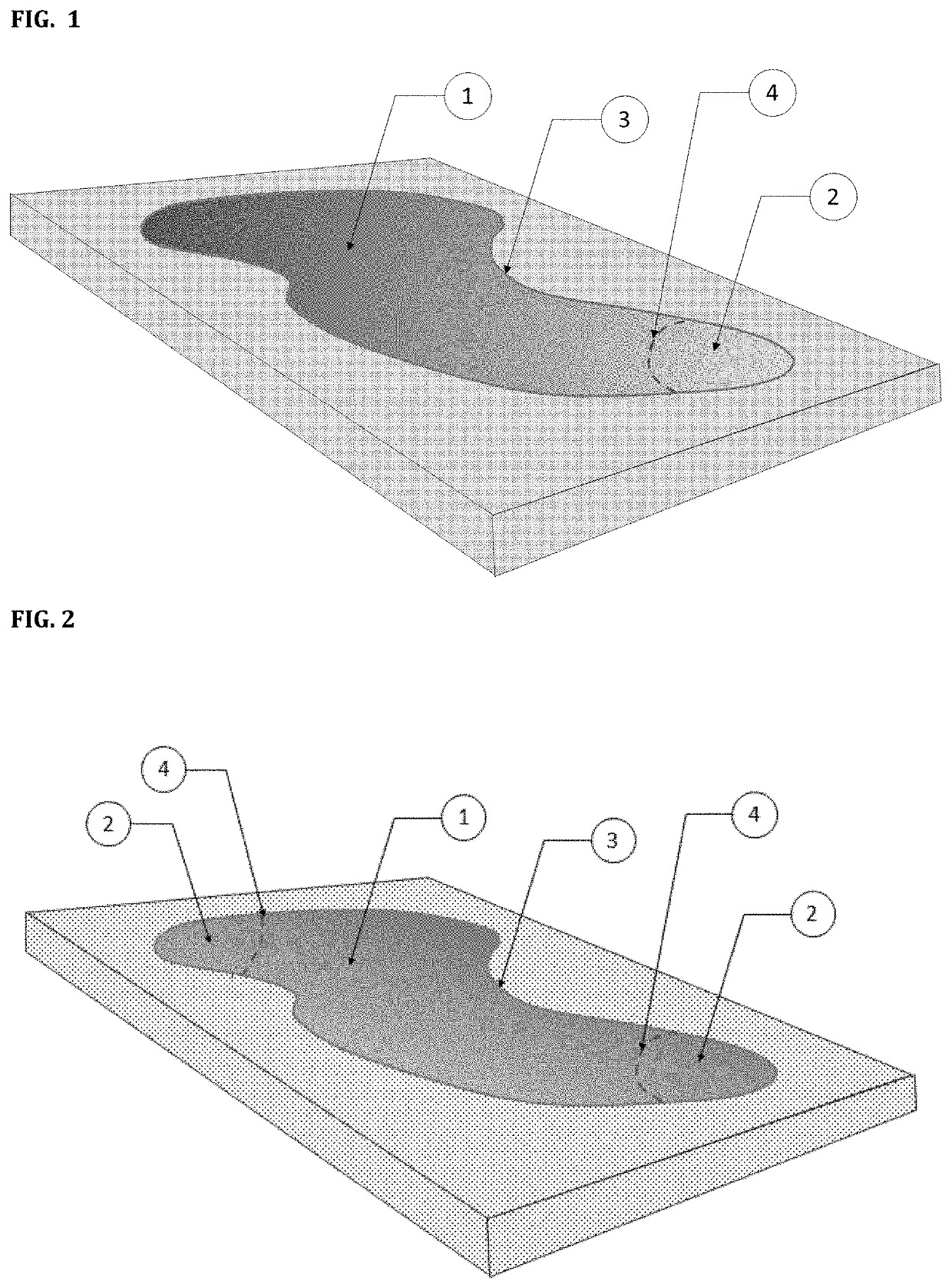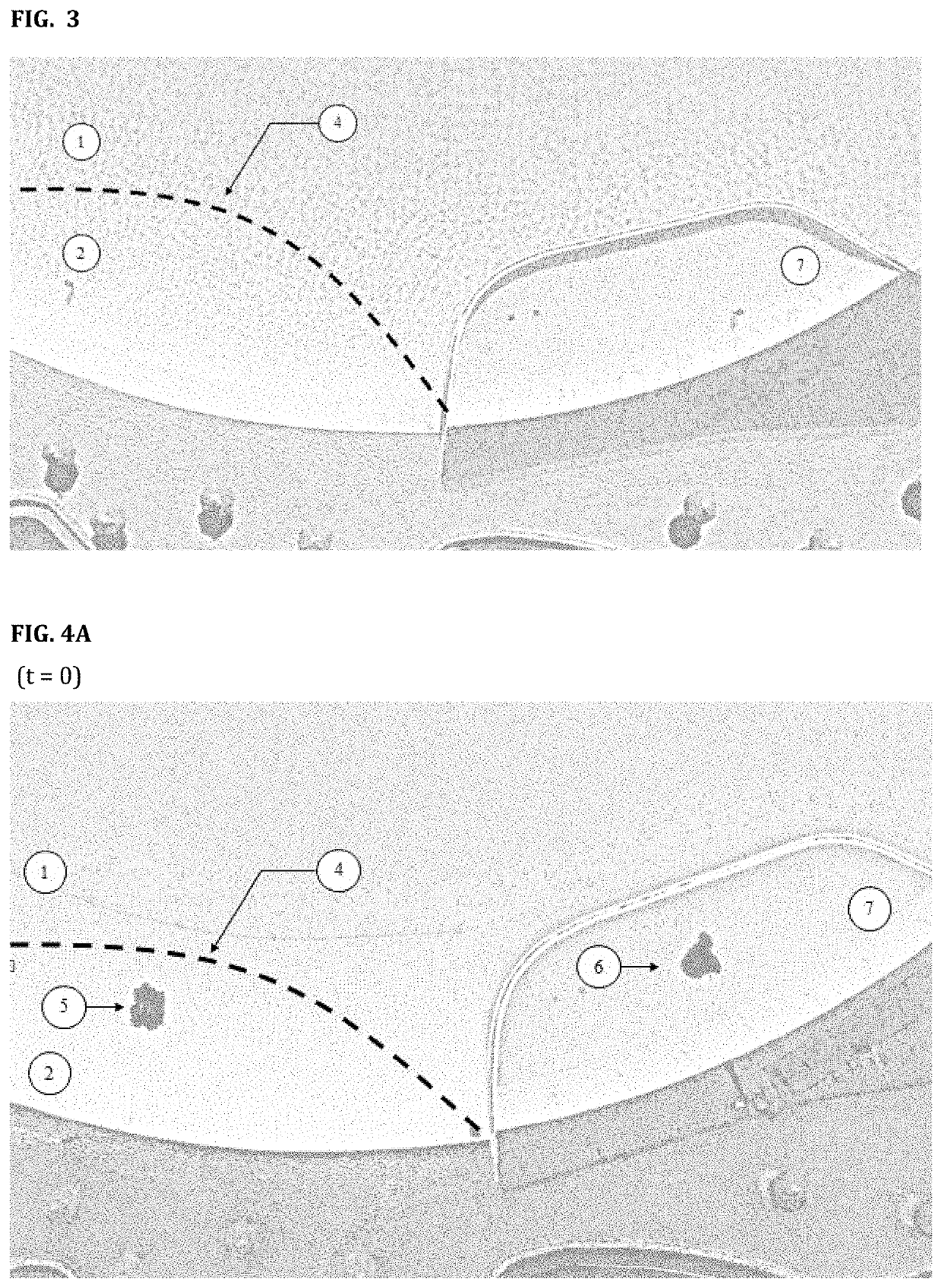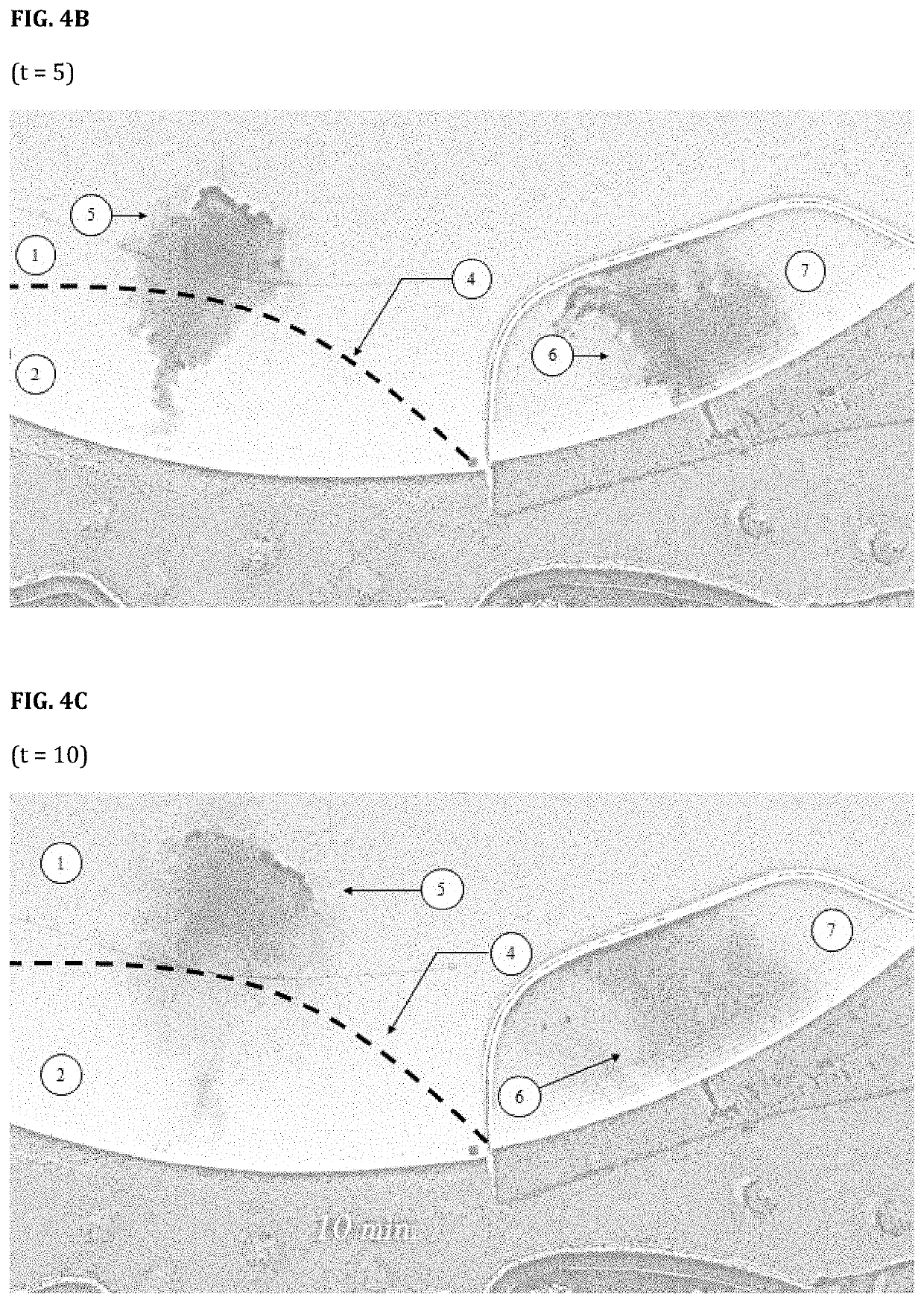However, such swimming pool technology has shown to be inefficient in the treatment and removal of several microorganisms from relatively small water bodies.
On the other hand, larger water bodies, like lakes used for swimming (hereafter referred to as “swimming lakes”) with higher dilution capacities have also had problems and have been inefficient in the inactivation and removal of some microorganisms, regardless of whether the water body is periodically treated or is untreated.
Furthermore, conventional swimming pool technology when applied to such large water bodies requires large capital costs, and requires large amounts of energy and chemicals to complete its operation and maintenance.
These resulting costs make use of conventional technology of swimming pools very expensive when applied to large water bodies.
In general, recreational water bodies, such as swimming pools and larger water bodies like swimming lakes, are always prone to be contaminated by microorganisms such as bacteria, protozoa, amoebas, microalgae and parasites, amongst others, which can create risks for bathers that use such water bodies for swimming, bathing, and for other direct contact recreational uses.
These microorganisms can survive for many days after a contamination event has occurred in the pool, since swimming pool disinfection treatment is not designed to kill all such microorganisms.
This is an important cause of RWIs, especially in treated water bodies such as swimming pools, as previously discussed.
This makes them very difficult to remove by conventional pool filtration with the commonly used filters being able to remove only about 25% of oocysts per passage through the filter.
Traditional disinfection is not enough to inactivate or kill such microorganisms, and the filtration system is not suitable for removing them from the water in an appropriate timeframe that ensures that people will not become infected once the contamination takes place.
In particular, due to conventional swimming pool technologies requiring filtering the complete volume of water in the pool—which is a time consuming process that does not even allow the complete filtering of all oocysts in an appropriate timeframe—together with the fact that chlorine may not inactivate all oocysts of certain microorganisms in a period shorter than 10 days.
Accordingly, if a contamination event occurs in the pool, such microorganisms may go undetected and infect many bathers before it is properly treated and eliminated from the pool water.
Therefore, swimming pools are prone to RWIs triggered by microorganisms such as bacteria, protozoa, amoebas, microalgae and parasites, amongst others present in the water which can have high resistance to conventional swimming pool water treatment methods, and therefore can potentially reach bathers either by swallowing the water, breathing the re-suspended microorganisms, or simply by having direct contact with the water.
However, this increase may have been influenced by more advanced detection methods, e.g., meaning that previous cases may have existed but went undetected.
In addition to contamination due to microorganisms such as Cryptosporidium and Giardia, swimming pools are prone to RWIs caused by amoebas present in the water body.
Further, such study reported that one of said public swimming pools where no free living amoebas or microorganism were found, had an extremely high chlorine concentration which made the surrounding air unbreathable and caused eye irritation (especially because it was an indoor pool with poor air circulation).
Primary amoebic meningitis (PAM) is an extremely aggressive disease that causes severe headache, fever and neck stiffness for several days and that leads to death in 97% of detected cases.
Currently, if a contamination event of these types occurs in a swimming pool, there are generally one of two outcomes:If the contamination event goes undetected, which usually happens, then the microorganisms will remain and spread in the water, potentially infecting many bathers (even though the water is being treated by the conventional pool system), which means that there could be more than 10 days of exposure of bathers to the dangerous microorganisms.
Also, as emphasized before, conventional pool filtration systems take a long time to remove oocysts from the water since there is partial filtration, and in some cases due to their sizes, the oocysts cannot be removed at all.If the contamination event is detected, in order to inactivate and remove oocysts it is necessary to close the pool for several days and sometimes even drain the entire complete pool volume, which rarely happens.
Alternatively, the swimming pool can go through a process of hyperchlorination, which requires an extremely high chlorine concentration that as described above, can make the surrounding air unbreathable as well as causing eye and skin irritation.
In conclusion, conventional swimming pool technologies, which combine disinfection and filtration processes are not prepared for treating some microorganisms, like Cryptosporidium and Giardia amongst others, which makes it difficult to ensure that the water, which is used for direct recreational purposes, is free of disease-causing microorganisms.
Conventional pool systems are slow or ineffective in eliminating microorganisms of these types, even though they comply with the required local regulations.
These water bodies are also prone to high risks associated to the presence of microorganisms such as bacteria, protozoa, amoebas, microalgae and parasites, amongst others.
In some cases, fatalities occur after a person becomes infected.
This partial disinfection and filtration is applied in such large water bodies mainly due to economic reasons, since the use of conventional swimming pool technologies in large water bodies would require very high capacity systems and equipment costs, as well as high operation costs related to the large amount of required chemicals and electricity for filtration purposes.
It is also important to note that such partially treated swimming lakes generally have poor water clarity.
When dealing with confined recreational water bodies, such as partially treated larger man-made lakes and lagoons, or similar, it is important to note that when they are not treated with conventional swimming pool technology, important sanitary risks might be generated.
For example, there have been many accidents caused by dangerous microorganisms in confined man-made large water bodies that were not treated using traditional swimming pool technologies, but were instead using a partial application of the technology.
Another recent accident happened in an artificial surf lake located in Waco, Texas, which did not use conventional pool technology but instead used a partial disinfection and filtration.
Even though this accident had fatal consequences, when the water quality analyses were performed on Sep. 27, 2018, the amoeba was not found in the surf lake, but was found in nearby water bodies.
Therefore, it is very important to highlight that a simple water quality analysis is usually not adequate for preventing these types of accidents, since these microorganisms can be present in specific sectors within the water bodies and / or located in corners.
Meningoencephalitis has an incubation period of between two and eight days, and in almost all cases results in the death of the infected patient.
In the latter case, most of cases end with a fatal outcome.
Both amoebas and acanthoamoebas are particularly dangerous where they are present in water bodies having strong currents or a constant water movement that generates a resuspension of sediments accumulated on the bottom surface of the water bodies.
Monitoring the amoebas through water quality analysis is extremely complex and requires specific knowledge.
Also, it is not enough to perform a few water samples in different locations within the water bodies, as such analysis would not help to conclude the same results for other locations as previously mentioned.
Therefore, today there are no methods or systems that provide complete sanitary safety in conventional swimming pools or in partially treated larger water bodies that are used for recreational purposes.
Conventional systems, even for swimming pools, would require very high levels of disinfectants, which apart from being extremely cost consuming, can generate a toxic environment and non-safe conditions for bathers and bystanders.
In addition, it has been shown that even when all the standards that are generally considered safe in a swimming pool are met, RWI's may still occur.
In general, bacteria are easily inactivated, while microorganisms like Giardia intestinalis and Cryptosporidium among others, are very difficult to inactivate.
 Login to view more
Login to view more 


